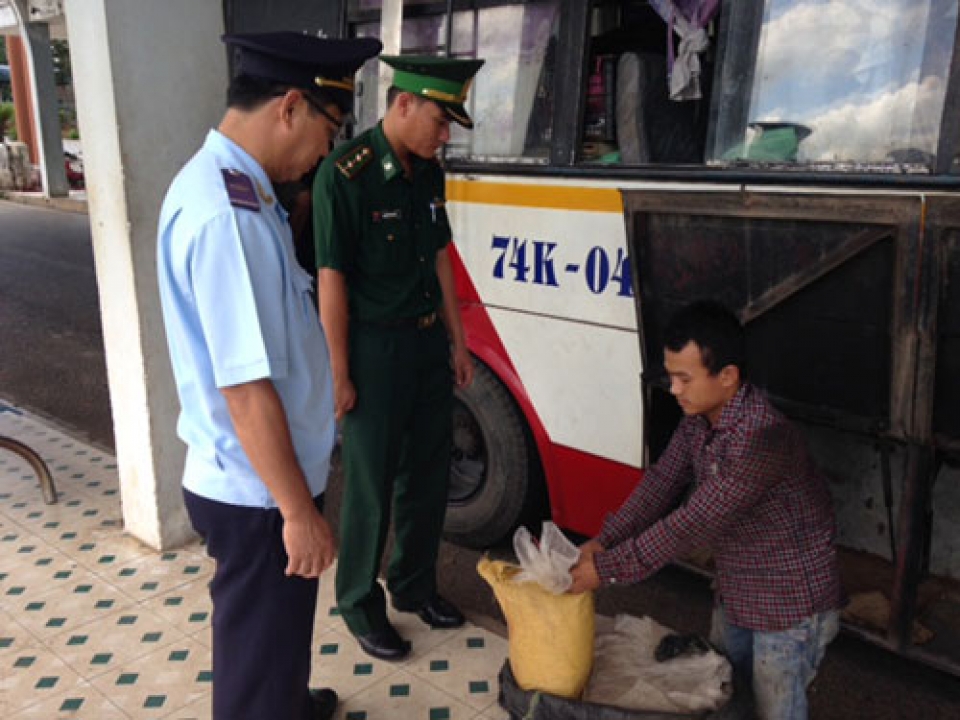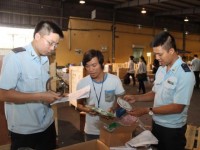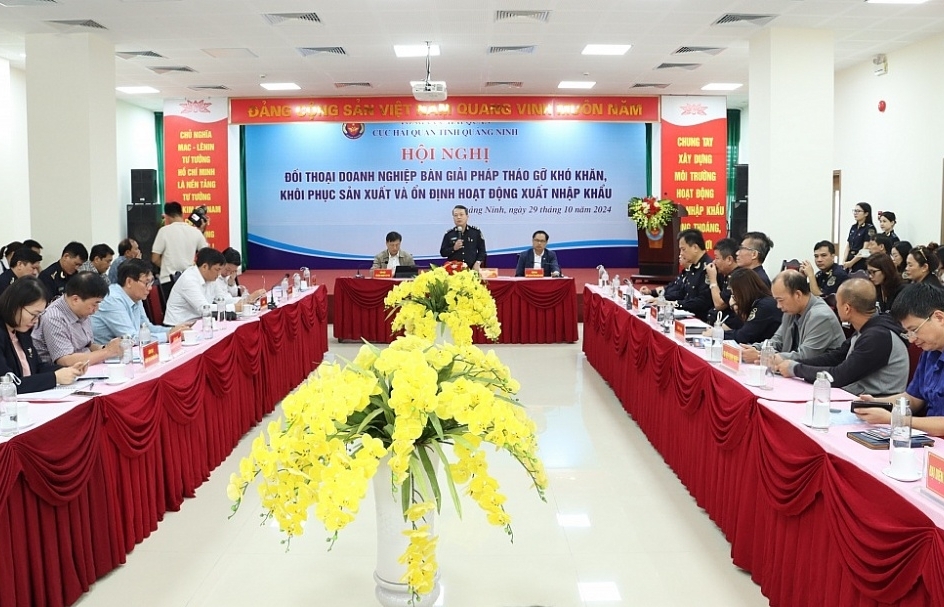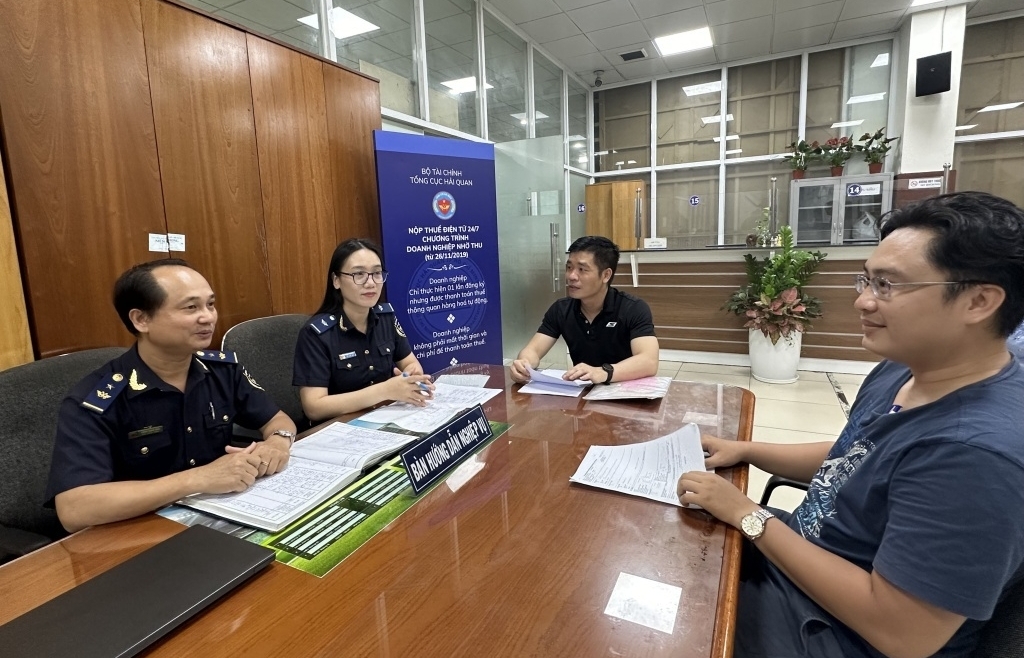Enterprises complain about inspections of both Customs forces and Border Protection forces
 |
| There is a need to distinguish the functions of the Customs and other relevant agencies. Photo: Duong Ngan. |
The current Customs Law contains a provision that in the border gates or in the area of Customs operations, imported and exported goods or transport means on exit or entry must be implemented Customs procedures under the management and supervision of Customs authorities. Border Protection forces only coordinate to inspect and control goods and vehicles. However, Decree No. 112/2014 / ND-CP stipulates that all border protection forces have the right to implement and coordinate with relevant State agencies to carry out border procedures, inspection, control and supervision of activities of exit and entry of people and vehicles; protect the sovereignty of national borders; implement crime prevention and the maintenance of political security and social security; perform foreign affairs; coordinate inspection and monitor goods and vehicles through border gates or crossings; ensure security of exports and imports; and prevent smuggling and trade fraud. The provisions in these two documents overlap each other, which has led to a lack of common principles agreed by the two functional authorities at the border gates.
At La Lay-Quang Tri international border gate, Customs Newspaper reporters realized that after enterprises carried out Customs clearance procedures at Customs offices, they continued to implement full processes and procedures for exports and imports at the border protection agency, which prolonged the time of goods release at the border gate. In addition, because the Border Protection forces complied with Circular 09/2016 / TT-BQP (the Circular guiding Decree 112-PV), they checked all goods and vehicles to ensure national security and safety, which was not consistent with the policy of administrative reform of the Government to reduce time of Customs clearance procedures for the entry and exit of goods and vehicles, which was implemented on the basis of risk management by the Customs authorities.
Mrs. Nguyen Thi Hong Van, the Director of Dong Loi Trade and Services Ltd. said that her company often conducted import and export procedures through La lay-Quang Tri border gate. Before the promulgation of Decree 112/2014 / ND-CP, her company was only under the control of the Customs authorities. But after this Decree took effect, goods of her company were inspected twice, under the management of both Customs authorities and Border Protection forces. However, due to unprofessional operations of Border Protection forces, it took many enterprises a long time to wait for release of goods.
Mrs. Nguyen Thi Hong Van added that another difficulty for enterprises was Vietnam-Laos transport permits. "Under current Laos regulations, on Vietnam-Laos transport permits, there are no signs of Laos Police, but only certified by Laos Customs authorities. However, for Vietnam-Laos transport permits issued by Vietnam, the permit is certified both by the Border Protection forces and Customs authorities. The overlap of regulations has increased the clearance time of import-export enterprises".
At Lao Bao international border gate, the current activities of enterprises follow the target "one stop", but in practice, it has shown that enterprises repeatedly need to stop. Specifically, according to normal regulations, Vietnamese enterprises must conduct procedures at Customs offices in Vietnam first and then implement Customs procedures in Laos. But now, Laos Customs sometimes requires Vietnamese companies to implement Customs procedures in Laos first and then return to Vietnam to implement Customs procedures. Therefore, the target “one stop” is a nonsense.
In addition, at Lao Bao international border gate, the motto is “one stop”, with the consensus of Vietnam-Laos authorities, but in fact, there is no clear process for implementation. Therefore, in some cases, many functional agencies of Vietnam-Laos such as the Customs; Border Protection forces, the police, the quarantine agencies all implemented physical inspections at the same time. For example, there were up to 12 officers of the two countries conducting actual inspections several times but not in the order, which made enterprises confused about how to work with which agency first. Moreover, despite no right to check goods, Laos police still checked imported and exported goods, which prolonged the time of Customs clearance.
In mid-August, Customs Newspapers reporters found that a very few of vehicles transported goods through Lao Bao international border gate, while previously, there were a great number of vehicles. This situation derived from no uniform way of doing things, which led to overlap of operations among the relevant authorities at the border.
So more than ever, the leaders of some Customs Branches and the business community proposed that senior authorities to urgently take measures to solve these problems and clearly define responsibilities of the relevant agencies. Accordingly, there is a need to distinguish the functions of the Customs authorities and other agencies in the control of exported and imported goods and vehicles on entry and exit. Besides, the implementation of the target "one stop" should be specified in chronological order, preventing the overlap of actual inspections.
 | Connect specialized inspection information to shorten the clearance times VCN- HCM City Customs Department has implemented a pilot scheme of portal of specialized inspections to connect ... |
The objective of the Customs authorities for clearance time is less than 5 minutes for “Green Channel”, less than 1 hour for “Yellow Channel” and “Red Channel” with physical inspections not exceeding 10 hours. However, if Customs authorities try to reform without the participation and support of relevant agencies, the goal of reducing the clearance time for businesses will be difficult to reach!
Related News

Regulating goods across Huu Nghi International Border Gate during peak times
19:37 | 02/11/2024 Customs

Strictly control imports and trade of toxic chemicals
17:34 | 03/11/2024 Anti-Smuggling
Latest News

Ha Nam Ninh Customs gathers feedback from the business community
09:55 | 04/11/2024 Customs

Facilitating trade and bolstering customs enforcement at Vinh Xuong border crossing
07:14 | 03/11/2024 Customs

3 items have a big impact on the budget revenue of Ho Chi Minh City Customs
19:38 | 02/11/2024 Customs

Quang Ninh Customs collects 85.75% of the budget revenue through the seaport area
19:37 | 02/11/2024 Customs
More News

Kien Giang Customs’ revenue reaches over 190% of target
10:36 | 02/11/2024 Customs

Quang Ninh Customs seeks solutions to promote import and export
10:34 | 02/11/2024 Customs

Businesses get a fair hearing under Customs' new 'three no' rule
09:31 | 31/10/2024 Customs

Khanh Hoa Customs reaches revenue target 1 quarter early
09:29 | 31/10/2024 Customs

WCO Permanent Technical Committee Meeting in Belgium: The managerial mark of the Vietnamese customs representative
09:29 | 31/10/2024 Customs

Revise regulations on implementing administrative procedures under the National Single Window
09:28 | 31/10/2024 Customs

Launch of the “Proud of 80 years of construction and development of Vietnam Customs” contest
09:08 | 30/10/2024 Customs

Cat Lai Port sees over 1,000 export shipments cleared by customs each day
08:56 | 30/10/2024 Customs

Quang Ninh Customs: Innovation in developing Customs-Business partnership
09:27 | 29/10/2024 Customs
Your care

Ha Nam Ninh Customs gathers feedback from the business community
09:55 | 04/11/2024 Customs

Facilitating trade and bolstering customs enforcement at Vinh Xuong border crossing
07:14 | 03/11/2024 Customs

3 items have a big impact on the budget revenue of Ho Chi Minh City Customs
19:38 | 02/11/2024 Customs

Quang Ninh Customs collects 85.75% of the budget revenue through the seaport area
19:37 | 02/11/2024 Customs

Regulating goods across Huu Nghi International Border Gate during peak times
19:37 | 02/11/2024 Customs




